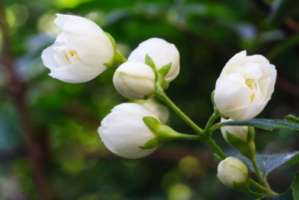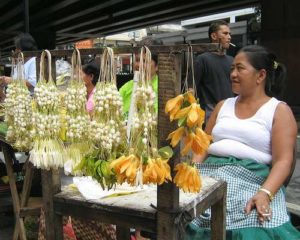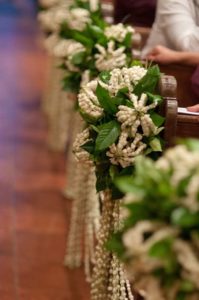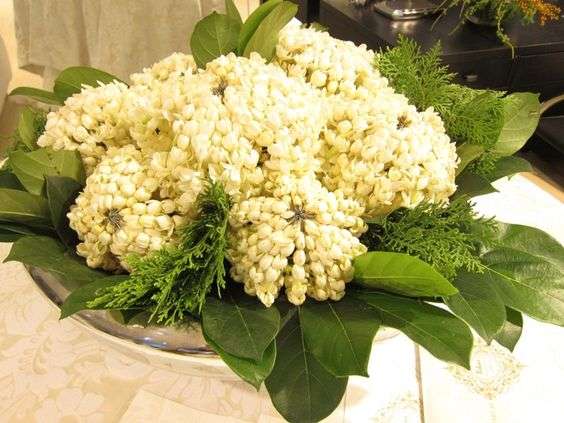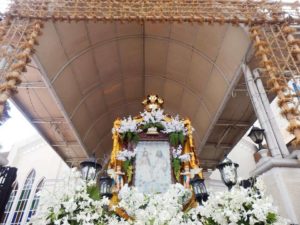Last Updated on April 21, 2020 by ITPM
Known for its beautiful small white flower with strong fragrance, Jasminum Sambac or simply Sampaguita is the Philippine National Flower. It symbolizes love, fidelity, devotion, dedication and purity. It is not only found in the Philippines, but is common among Asian countries like Thailand, Vietnam, India and Indonesia. This flower is often used during rituals as beautiful and elaborate garlands, and in making perfumes and essential oils. Despite its size, its fragrance and sweetness is irresistible. That is why almost everyone loves Sampaguita.
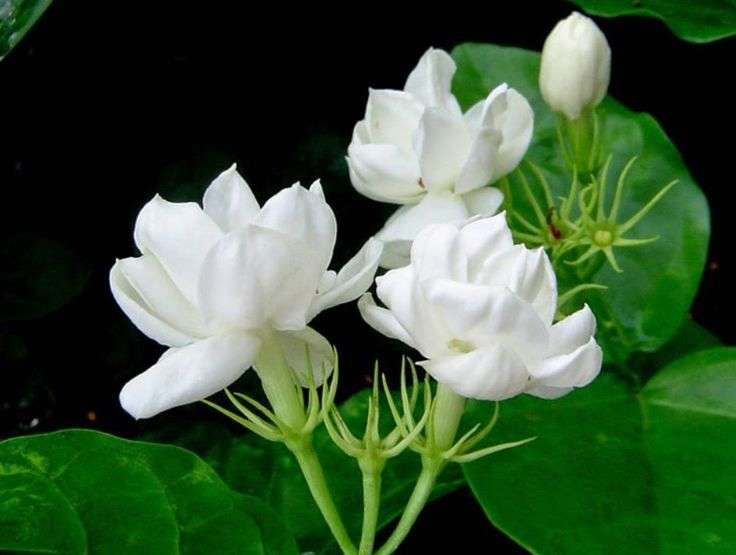
“Sumpa Kita”
Among the famous Filipino legends is the legend of Sampaguita. According to legend, a long time ago, a sturdy bamboo fence stands between the two neighboring baranggays — Gagalangin and Balintawak. Once every five years the fence is being replaced with new bamboos. In Balintawak lives a beautiful and kind young lady named Rosita, the daughter of the datu. The datu of the other baranggay, Gagalangin, has a son named Delfin.
Despite the number of handsome men who admires Rosita’s beauty, only Delfin captured her heart. The two had a secret relationship since they came from different parties. They have a lair near the end of the fence where they meet every night.
One day, an argument sparked between the 2 barangays when the fence was moved 5 meters, making Balintawak’s area larger. A battle immediately followed. While war was ensuing, Delfin’s father died. Delfin has no choice but to replace his father and lead the war.
Many died in the war, including Delfin. Before his death, he asked his servants to bury him at the end of the fence where he used to meet Rosita every night. Rosita also got seriously ill and she also died. Before her death, he asked his father to bury her at the spot where Delfin was buried.
Years and years passed and the existence of the two baranggays dispersed. Many people started occupying Gagalangin and Balintawak. Every year, they experience an extraordinary phenomenon in May. They hear can a sweet voice of a lady saying “Sumpa kita!”. On the spot where the voice comes from, they found a flowering bush. The flowers are small, white in color and have a strong smell. When they dug the roots of the bush, they saw that the roots are coming from the mouth of two persons buried beside each other. They realized that the bush is growing from the mouths of Delfin and Rosita.
They named the flower ‘Sumpa Kita’ and it evolved to it’s present name ‘Sampaguita’.
Sampaguita: The National Flower of the Philippines
The Sampaguita flower is a symbol of the Filipino people. The flower symbolizes the characteristics of a Filipino. It is also a part of the lives of every Filipino since you can see it almost anywhere you go.
One can see this small, white flower either skewered on a ting-ting or in a form of garland or lei. Sampaguita leis also come with either Camia, Champaca, Dama de Noche or Ylang-ylang blooms as the pendant with Abaca as the string.
Its vendors are always present not just in front of the churches’ ‘puerta mayor’ but also in markets and even anywhere along the streets.
One can never miss the Sampaguita leis hanging from the rear-view mirror of jeepneys. Oftentimes, one can also see its leis hanging on church santos, and even on a typical Filipino household altar as sign of offering. During Holy Week and Flores de Mayo processions, Sampaguita flowers on ting-ting together with Paco leaves is always present.
Nowadays, the use of Sampaguita for the wedding bouquet of a Filipiniana-themed weddings is becoming very popular. Some florists also use the buds to decorate church aisle and in making table centerpieces. The arrangements have evolved ,and is not anymore limited to leis.
With this, I must say that truly, the Sampaguita is one of the symbols of the Filipinos. This small, white, sweet-scented flower is as versatile as the Filipinos.
The ‘Planta’ in Barihan, Malolos, Bulacan
When I was young, I always observe the Sampaguita vendors outside the church after we hear a mass. I wonder where do they get their supply because literally, it seems that there is a plantation in Malolos because of the number of sampaguita vendors until I heard few years ago that there is a Sampaguita ‘planta’ in Barihan.
Barihan, a baranggay located 6.3 kms. from the city center of Malolos, is famous for the miraculous image of the Santisima Trinidad or the Triune God. People from different places visit Barihan just to see the miraculous painting. When you visit the chapel, you will meet a lot of lei vendors especially during the fiesta season. Unknown to many, Barihan is the source of Sampaguita supplies for many vendors in the different towns in Bulacan.
A lot of the vendors in the chapel source their leis from one local home near the chapel. When I entered their eskinita, I saw bundles of Abaca strings being dried hanging on the walls. There are also plenty of big coolers but the contents are not beverages but flowers! Yes! Plenty of coolers full of Sampaguita blooms!
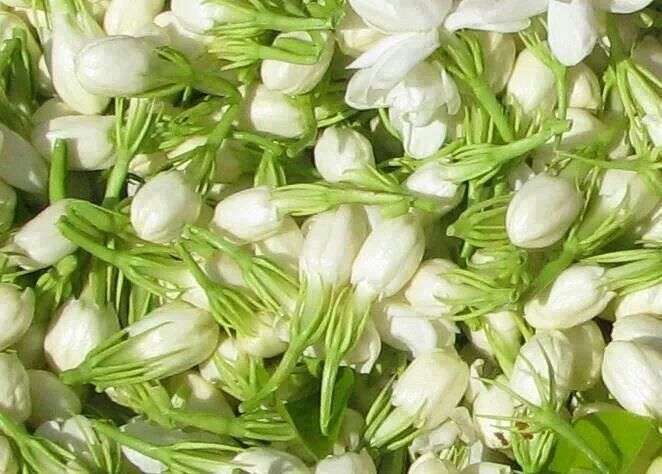
Sampaguita Buds 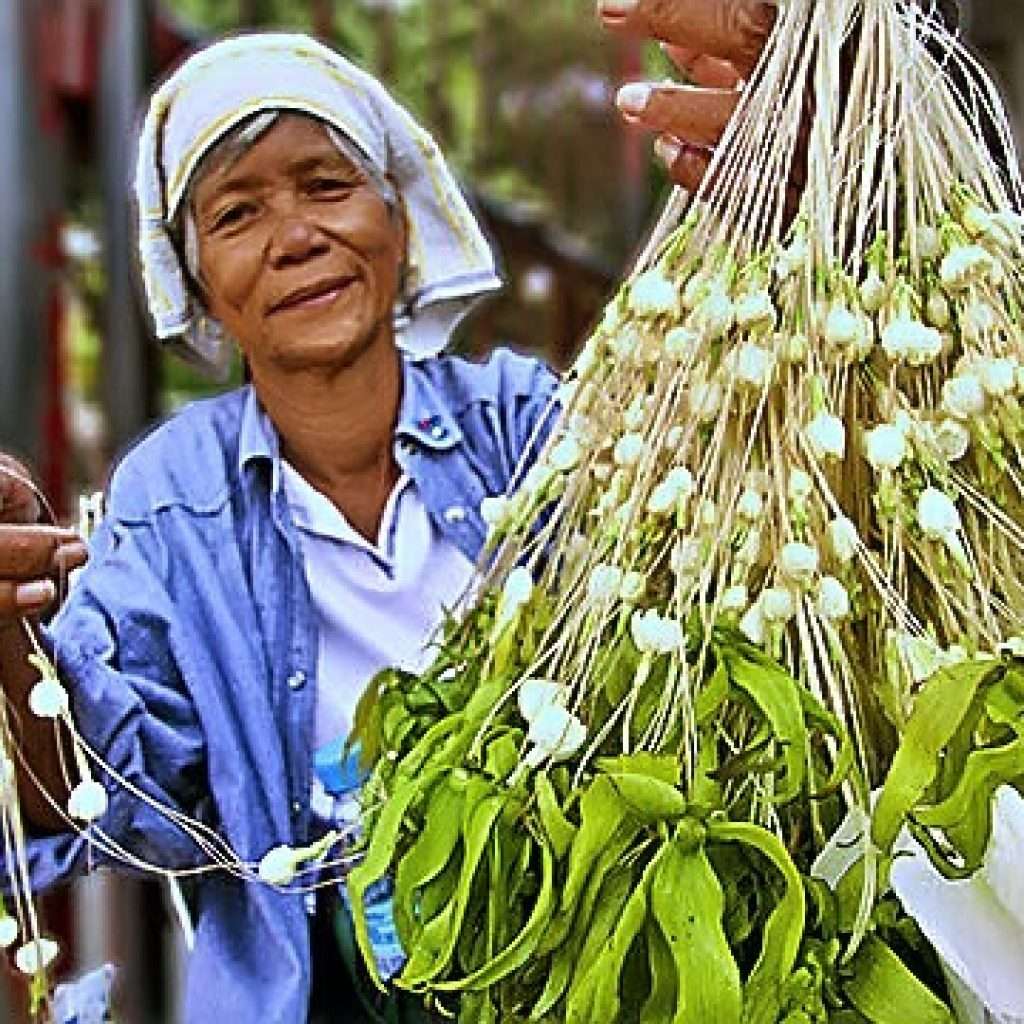
An Old Woman Selling Sampaguita Leis
According to the owner, they get their supply from the market in Camachile, Caloocan. From the materials from Caloocan, they make the various arrangements that are locally available in Malolos. I can say that the price of Sampaguita in Barihan is cheap, compared to other vendors/retailers. You can also make your own lei since you can buy from them supplies such as Abaca, Ylang-ylang and Camia. They customize Sampaguita garlands, centerpiece arrangements, bouquets, and crowns depending on your specifications and special use.
If you need of a lot of this sweet-smelling tiny buds, why not consider Barihan’s ‘planta’?
